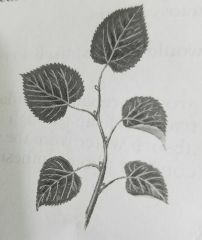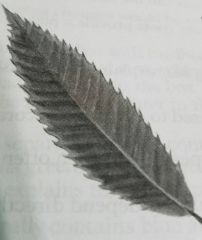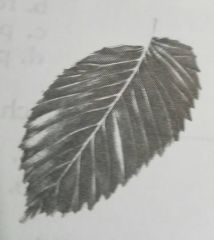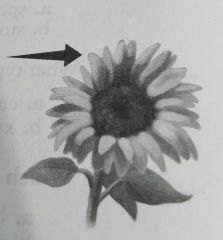![]()
![]()
![]()
Use LEFT and RIGHT arrow keys to navigate between flashcards;
Use UP and DOWN arrow keys to flip the card;
H to show hint;
A reads text to speech;
48 Cards in this Set
- Front
- Back
|
What carbohydrate strengthens plant cell walls? |
cellulose |
|
|
What type of tissue are cork and parenchyma? |
structual tissue |
|
|
What are two kinds of special leaves? |
spines and tendrils |
|
|
What is the purpose of cellular respiration? |
releasing energy from food |
|
|
What is the creeping, aboveground stem of a grass plant? |
stolon |
|
|
What type of vascular tissue carries sap upward? |
xylem |
|
|
What plant family is known for its poisonous members? |
cashew |
|
|
What are the largest deciduous trees in America? |
sycamores |
|
|
Which group of trees produces winged fruits called samaras? |
maples |
|
|
What is not a ceral grass? |
sugar cane |
|
|
What is involved in an abscission layer? |
loss of leaves |
|
|
What term refers to trees that lose their leaves each fall? |
deciduous |
|
|
What is the bushy head of a tree called? |
crown |
|
|
A leaf that lacks a leafstalk is an _____ leaf. |
sessile |
|

What type of leaf arrangement is shown? |
alternate |
|
|
Name the two main kinds of root systems. |
taproots and fibrous roots |
|
|
Leaves, stems, and flowers, are part of the ____ system. |
shoot |
|

What type of venation is shown in this picture? |
pinnate |
|
|
What is the other name for flowering seed plants? |
angiosperms |
|
|
The place where an organism lives is its _____. |
habitat |
|

Is the pictured leaf most likely from a monocot or from a dicot? |
dicot |
|
|
Plants whose special leaves trap and digest insects are _____. |
insectivorous |
|

Which of the two types of flowers in a composite flower head is indicated by the arrow? |
ray flowers |
|
|
The stacks of chlorophyll-containing disks inside chloroplasts are called _____? |
thylakoids |
|
|
What is the pressure produced by water within cells? |
turgor pressure |
|
|
Name the liquid found in the roots, stems, and leaves of plants. |
sap |
|
|
Name the process by which water vapor is lost from the leaves of plants? |
transpiration |
|
|
The term used to refer to nonwoody plants is ____. |
herbs or herbaceous |
|
|
Nitrogen in the soil is returned to the air by ____ bacteria. |
dentitrifying |
|
|
What most likely is the cause when leaves on a particular plant wilt during the day, but recover at night? |
The plant receives adequate water, but hot temeratures cause rapid transpiration during the day. |
|
|
A leaf having more than one blade on the leafstalk is a ____ leaf. |
compound |
|
|
What best explains why plants are considered autotrophs? |
Plants conduct photosynthesis. |
|
|
Based on their life cycles, all trees and classified as ____. |
perennials |
|
|
What happens when a plant's meristematic tissue is damaged? |
The plant cannot grow or repair tissue damage. |
|
|
The onion plant is typically harvested after its first season of growth; if it is allowed to continue growing, it produces flowers in the second season before dying. What type of plant is the onion? |
biennial |
|
|
Questions 36-38:
A botanist studying the rate of photosynthesis analyzes the chemical composition of one leaf from each of several nearly identical plants. She then places each plant in a separate sealed box containing a known composition of atomospheric gases and allows then to sit under carefully controlled lighting conditions. After a day, she analyzes the chemical composition of the atomosphere in each box and of another leaf from each plant. What change would most likely affect the rate of photosynthesis? |
covering part of the box with carboard
|
|
|
What statement best explains the following observation? When the botanist separates the leaf content to analyze them, she finds that the mixture contains green, blue, and yellow substances? |
The leaf naturally contains blue and yellow pigments that are masked by the presence of green chlorophyll. |
|
|
What is least likely to provide a botanist with a good measurement of the rate of photosynthesis? |
change in the amount of chlorophyll in a leaf |
|
|
stalk that attaches leaf to stem |
petiole |
|
|
When placed in pure water, the cells of humans and animals absorb water and swell until they burst; but the cells of plants absorb water and become firmer without bursting. What part of plant cells is responsible for this difference? |
cell wall |
|
|
What best explains the role of pea-family plants in the nitrogen cycle? |
Pea-family plants' roots provide a place for nitrogen-fixing bacteria to grow. |
|
|
middle layer of leaf where majority of photosynthesis occurs |
mesophyll |
|
|
large, central vein |
midrib |
|
|
A biologist is trying to determine what types of plants a certain species of frog prefers to eat; in what field of biology is he working? |
zoology |
|
|
openings in the leaf |
stomata |
|
|
What best explains why grasses are one of the most important groups of plants? |
Man and many animals depend directly or indirectly on grasses for most of their food. |
|
|
protects and covers the leaf |
epidermis |
|
|
ESSAY: Write a paragraph and defend the following statement: God designed each organ of a flowering plant to help the plant fulfill its role in nature. |
God made plants to provide food for other organisms. All food consumed by humans and animals comes directly or indirectly from plants. Plants have many other uses like making carbohydrates and oxygen. Leaves absorb the light from the sun and takes in carbon dioxide to produce food for the plant through photosynthesis. The food allows the plant to live, so it can provide nutrients to any human or animal that eat any part of the plant. The roots help anchor the plant in the soil and help bind the soil together to help prevent soil erosion. Roots also absorb the water the leaves need for photosynthesis. Stems transports water and nutrients throughout the plant, helps hold its leaves above the ground so they can get more sunlight, provides homes for animals, and wood and other supplies for humans. Flowers produce nectar and fruits that humans and animals eat.Flowers allow plants to reproduce more flowers like them through pollination, so they can always be available for their role in nature. Flowers produce nectar and fruits that humans and animals eat. |

